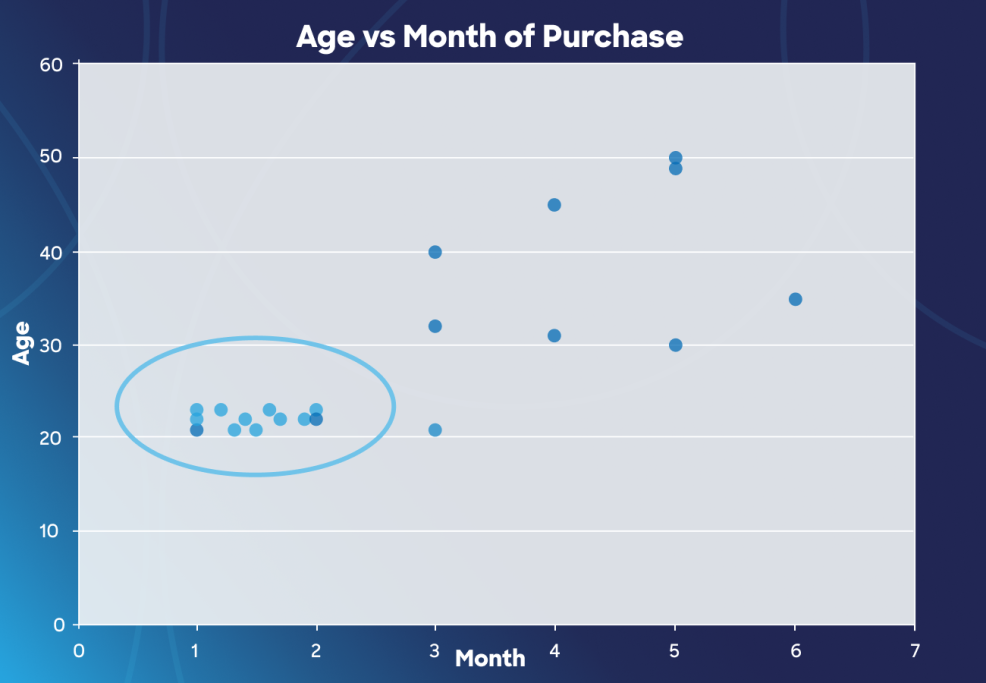
Collection
What’s the Difference Between Segmentation and Clustering?

Collection :
Marketers have been using segmentation and clustering for some time now. Both are important facets of observing and predicting consumer behavior, but there’s still confusion about how they differ and how they affect your marketing.
We’ll dive in shortly, but let’s talk about both generally first: Clustering and segmentation both involve grouping people based on similarities. In the land of digital experience, they’re the dynamic duo of predictive marketing. The main difference between the two is that clustering is driven by machine learning, and segmentation is human-driven. This difference has caused more than a few folks to be clustering-averse and to cling to their own customer knowledge.
That reluctance touches upon the familiar battle of man versus machine. But instead of seeing segmentation as the human version of data grouping versus the machine version of it, these tactics can be used together. The dichotomy is unnecessary.
Both tactics help you understand customers and prospects better, and the more you know about how people interact with your organization, the better you’re able to give them what they want. That’s money in the bank, good customer experience, and smart business.
What is clustering?
Clustering uses machine learning (ML) algorithms to identify similarities in customer data. The algorithms review your customer data, note similarities humans might’ve missed, and put customers in clusters based on patterns in their behavior.
How to apply clustering to your marketing
Let’s say I sell high-end little black dresses (LBDs, as fashionistas call them). In this cluster model mock-up of my LBD customers, the algorithm found that many customers purchased a dress in the first two months of the year and were women in their early twenties.

This example only identifies three dimensions: age, whether they made a purchase, and purchase date. Among these buyers, ML helped me discover the identified cluster and their buying behavior. I can then establish them as a group and build targeted marketing campaigns specifically for them.
The main point is that machine learning powers clustering and that the algorithms will find similarities; marketers don’t do any work, per se. Instead, they decide what steps to take after ML has done the initial work.
For instance, in the example above, a cluster of buyers between the ages of 20 and 30 who bought LBDs between January and February were identified. Using that data, marketers can develop targeted campaigns that pinpoint that cluster. Because if there’s such a similarity in buying patterns for LBDs in that group, perhaps they share patterned behaviors for other products. In a case like this, a marketer might consider sending this cluster a discount code for items that complement an LBD — like Louboutins or an Hermès clutch.
What is segmentation?
When a marketer chooses to pull certain groups from a large body of data, that’s segmentation. Put another way, it’s when you look at your customer data and pick out specific criteria to target a group.
How to apply segmentation to your marketing
With segmentation, you (a human being) choose your target.
If I’m selling my $1,000 LBD, I want to target women with a high annual household income. In this case, I define the group’s parameters: women who earn more than $100,000 per year and who have purchased similar items in that product category. Deliberately identifying and grouping customers who are women with high incomes is segmentation.
Where segmentation can be error prone is in human assumption. I assume that this segment can afford my company’s dresses and, because of their incomes, that they’re likely older. Had we tried clustering, we would have learned that younger, not older, women do have the incomes and tendency to purchase LBDs. That’s how our biases can mislead us; they push us to select a segment of people we think we should target.
Clustering doesn’t have preconfigured biases; it just crawls data for similarities.
But identifying this segment is still important because people outside of it likely couldn't afford — or just don’t want — a $1,000 dress. By customizing how I market to this segment, I increase their likelihood to buy and, by extension, the conversion rate.
But the segment is still quite large, and not everyone buys that dress. What if I add one more dimension to increase specificity — age, for instance? From my clustering data, I see that women start buying designer dresses after the age of twenty-one.
So, to refine my segment, I remove women under 21. Still, not everyone in this newly refined segment buys that dress. What about location? I find that only women older than twenty-one and who live in major cities buy such dresses, so we’ll target New York City, Los Angeles, San Francisco, and so on.
The idea is to refine the segment until it’s so well targeted that sales happen more often than not. Machine learning in a cluster analysis helps with that by constantly analyzing behavior and rescoring customers. With this daily iteration, cluster analysis looks for behavioral changes on a daily basis. Together, segmentation and clustering are powerful allies.
Customer data platforms: The technology you need to segment and cluster
With the rise of big data, marketers now have hundreds of characteristics they can study: brand preference, response to discount offers, time spent on site, browsing behavior, and so on. Some customer characteristics have no correlation to buying behavior; other characteristics correlate to buying behavior and to each other in different ways.
But it's not feasible for a person (or even a team) to go through hundreds of data types to find relationships between each. Without a dedicated data science team or other technology that enables ML, this would be an impossible lift. Machine learning models in a customer data platform (more on CDPs in a minute) can go deeper and parse through thousands of data sets to predict buyer likelihood through cluster models.
But tracking and strategizing based on human behavior across digital properties, as well as identifying duplicates and resolving or combining data points, can be a lot.
Identity resolution technology offers a solution. For instance, through identity resolution, you can figure out that the same person uses two different email addresses. Although it’s a simple example, you can imagine how multiplying the issue by thousands could lead to data chaos.
Fortunately, we have technology that solves these issues. I mentioned them earlier, but customer data platforms are an ideal place to house and consolidate all your customer data so you can cluster and segment accordingly. A CDP ensures you don’t have all sorts of customer data spread between disparate systems. Instead, it acts as a single source of truth with 360° customer profiles — aka first-party data that gives the most accurate snapshot of behaviors around which you can build personalized experiences. CDPs that incorporate identity resolution are especially valuable.
And CDPs that feature machine learning make personalization efforts dynamic. Because human beings aren’t consistent creatures, their behavioral data may be puzzling. For example, a CDP can often decipher the difference between a user browsing and actually buying something versus a user “window shopping” and filling a cart with stuff they’re never going to buy. Knowing this, marketers can recommend similar items they could purchase versus sending a gentle reminder that they’ve left their cart full or offering a coupon for an order over a certain dollar amount.
Thus, customer data profiles, clusters, and segments are constantly being examined to study changes and inform strategic decisions accordingly. Machine learning constantly performs tedious analyses to yield clusters, while you choose the parameters of your segments. In both cases, darling human, you decide the marketing approach you’ll use based on the insights that each tactic produces.
Next steps to take
Let’s recap.
- Segmentation: Manually pulling certain groups that meet chosen criteria from a large body of data
- Clustering: Using machine learning to identify similarities in customer data
Both complement each other, and the main difference is that segmentation involves human-defined groupings whereas clustering involves ML-powered groupings.
The amount of customer data that modern businesses handle is staggering. Successfully weaving clustering and segmentation into your marketing tactics depends on how you organize your data, which is where a customer data platform can be a huge help.
For more ways marketers can use a customer data platform to organize and activate their data, download our free e-book, Working With Customer Data: From Collection to Activation.
Or, if you want to see it in action, we’ll be happy to show you how it works in real life. Schedule a demo here.


